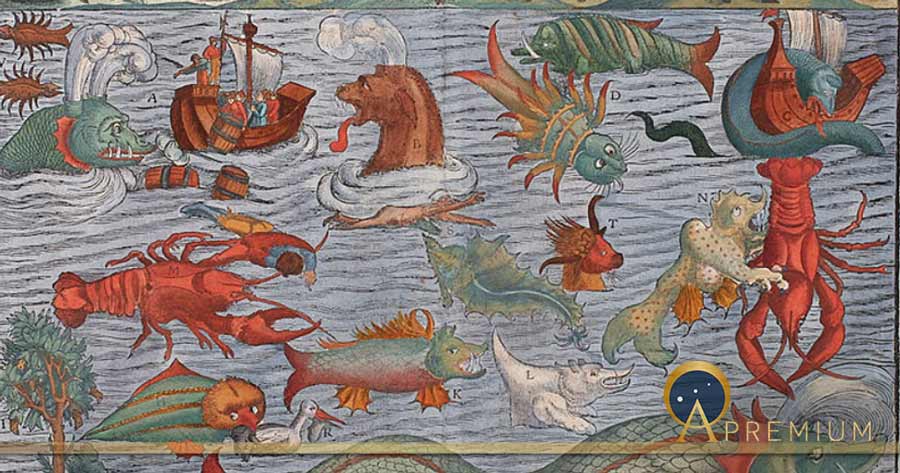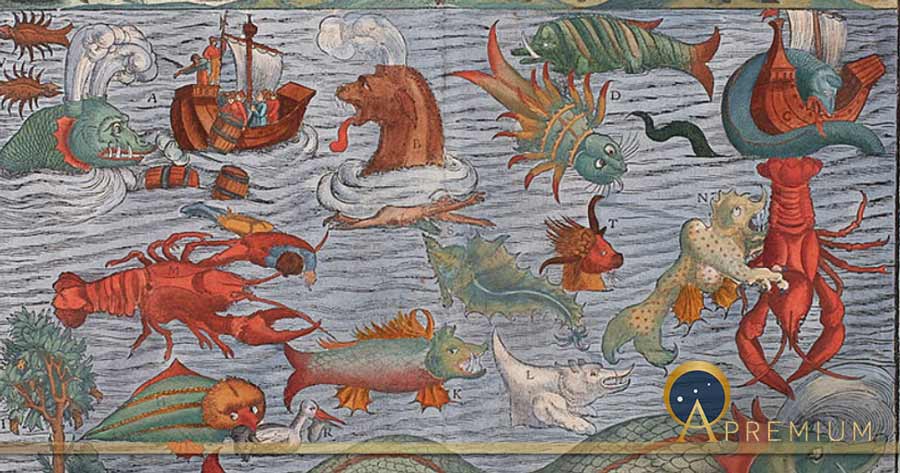

Dinosaurs roaming the Amazon, plesiosaurs hunting in glacial lakes, half-octopus, half-shark creatures that drag ships down to the seabed and a giant anaconda, are but a few of the monsters recorded in the mythologies and written histories of North, South and Central America. Though most of these creatures can be explained away as ‘archetypes of mythology,’ there are researchers who suggest that some of the oldest accounts may be based on creatures that were witnessed before they became extinct in the remote past, or in some cases, ancient creatures that failed to become extinct. But in most instances, ancient sea-serpent reports were of creatures known well today, but who were unrecognized in history.

Sea serpent reported by Hans Egede, Bishop of Greenland, in 1734 (Public Domain)
In his 2016 book, People are Seeing Something: A Survey of Lake Monsters in the United States and Canada, author Denver Michaels examines the myths, legends, folklore, and eyewitness reports of the lake monster phenomenon south of the Mexican border, in Central and South America. This writer asks what parallels could be drawn between the creatures found to the south and their Canadian and American counterparts? One of the phenomena presented in this work is the ‘Monster of Lake Tota’ , a giant creature that is as deeply associated with Colombia’s largest lagoon, Lake Tota, at over 200 feet (61 meters) deep with a surface area of 21 square miles, (54 square kilometers) as the Loch Ness Monster is entrenched with Scotland’s longest lake at 36 kilometres (22.5 miles) in length with an average depth of 132 meters (433 feet).
The earliest report of the Loch Ness monster appears in the Life of St. Columba by the monk, Adomnán, written in the sixth century AD. Writing about a century after the events he described, Adomnán said the legendary Irish monk, Saint Columba, was pilgrimaging in the wild and dangerous pagan Scotland, spreading the word of Christ, when indigenous people told him of an aquatic monster, said to be a demon, which haunted the waters of Loch Ness. Columba witnessed the dead body of a Pictish man whom locals said had been attacked and killed by the water beast and had rendered the waters of the lake impassible. Columba instructed one of his followers, Luigne moccu Min, to swimming across the River Ness to lure the diabolical creature to the surface.
READ MORE…
Like this Preview and want to read on? You can! JOIN US THERE ( with easy, instant access ) and see what you’re missing!! All Premium articles are available in full, with immediate access.
For the price of a cup of coffee, you get this and all the other great benefits at Ancient Origins Premium. And – each time you support AO Premium, you support independent thought and writing.
Ashley Cowie is a Scottish historian, author and documentary filmmaker presenting original perspectives on historical problems, in accessible and exciting ways. His books, articles and television shows explore lost cultures and kingdoms, ancient crafts and artifacts, symbols and architecture, myths and legends telling thought-provoking stories which together offer insights into our shared social history. www.ashleycowie.com.